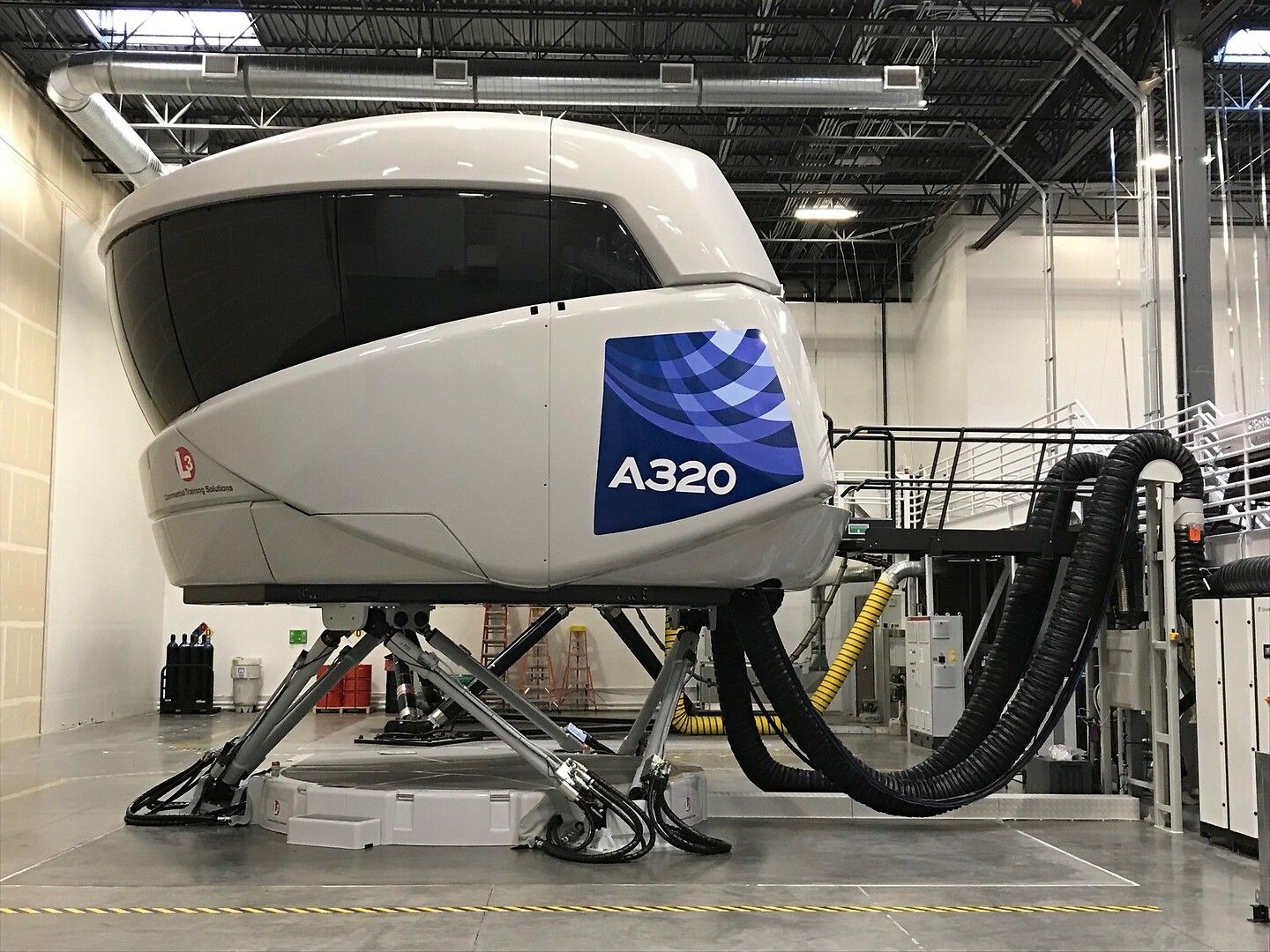Flight simulators are used extensively in the air industry for pilot training and checks. Their movement, vision, and other functionality are regulated by key aviation authorities, with four different levels defined. Level D is the highest of these, representing the most sophisticated and accurate simulators most commonly used by airlines.
The full-flight simulator
The high-end simulators used by airlines are known as full flight simulators. To be classed as a full flight simulator, it should be a full-size replica of a specific model's cockpit. It should offer a full view from the flight deck and have a motion system of at least three degrees.
As they form part of a pilot's training and certification procedure, they are closely regulated by aviation regulators. The United States Federal Aviation Administration (FAA) and the United Kingdom Civil Aviation Authority (CAA) both use the same terminology and classification for full flight simulators, with four levels of increasing sophistication.
Get the latest aviation news straight to your inbox: Sign up for our newsletters today.
Four levels of sophistication
The four levels of A, B, C, and D refer to increasing features and realism of full flight simulators. The highest level is D, and this is what most airlines will use. It allows (under FAA rules) all training required for an aircraft type rating and recurrent training.
So, what is the difference between the levels?
- A level A simulator has a motion system with only three degrees of movement. It is likely to also have a relatively basic visual system.
- A level B simulator also has three degrees of freedom. It is more accurate, with a higher-fidelity aerodynamic model.
- A level C simulator will have six degrees of freedom. It also must have a minimum of 75 degrees horizontal field of view for each pilot.
- The highest level D simulator also requires six degrees of freedom. Visuals are significantly improved, with a wider range of lighting conditions and more detail. The horizontal field of view for each pilot is increased to 150 degrees. There are additional motion effects needed to simulate certain events.
Still some limitations
The level D simulator is as good as it gets in commercial simulator use. It will offer an identical cockpit setup and layout to the real aircraft, a broad field of vision, and simulation in day, night, and dusk conditions. Despite the full six degrees of motion though, there are still noticeable movement limitations. Turning on the ground is one example. Sustained acceleration and the effect of G-forces are also missing.
Get all the latest aviation news right here on Simple Flying.
Try one for yourself.
A full flight simulator is, of course, way beyond the reach of even the most dedicated simulator fan. Many airlines, though, make their simulators available to the public.
British Airways has one of the most comprehensive selections. Sessions can be booked on the 767-300, the 747-400, and the 777-200 simulators. Prices start at £399 ($548) for one hour. Other airlines renting out simulators include Jeju Air, Thai Airways, Emirates (with an A380 simulator at Dubai Mall), and Eva Air. Others are run privately or in museums, including the only remaining functional Concorde simulator at the Brooklands Museum in the UK.
Earlier this year, Simple Flying had the chance to try out a full flight simulator ourselves. At Icelandair's training facility in Reykjavík, there are three full flight simulators provided by training tech powerhouse CAE. Thus, we had the opportunity to simulate the landing of a Boeing 767-300ER.
The equipment can evolve among the ever-changing requirements of the aviation industry. As the CAE Icelandair Training Center puts it:
"We adapt our simulators to our customers in order to reflect the fleet‘s systems environments and cockpit layouts as well as airline‘s procedures."
Altogether, simulators are critical to the training process of pilots across the globe. With its ability to mimic real-life scenarios, the level D simulator has proven its value throughout the industry.
Have you used any of the airline's Level D full-flight simulators - either as a pilot or privately? Let us know about your experiences in the comments.

